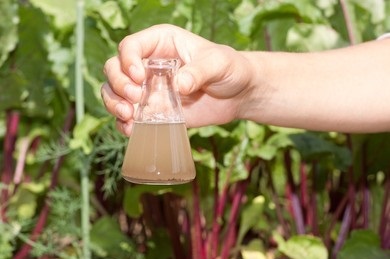Pesticides are widely used worldwide for their ability to kill insects, fungi, and other organisms that harm the growth of crops. The continuous development of modern agricultural science has led to more and more kinds of pesticides being used in crop production. Still, while improving crop yields, they also cause great harm to the environment.

The pollution caused by pesticides has a significant impact and is difficult to prevent and control. It is difficult to detect non-emergency events such as contamination of water sources. Pesticides entering the water and then ingested by the human body very harmful to health. Therefore, Lifeasible has established an analytical platform for pesticide residue detection in water using diverse detection methods. The platform can detect a wide range of pesticide contamination in water samples from various sources and provide our customers with detailed and reliable analytical reports.
At present, Lifeasible adopts the detection methods for pesticides in water samples mainly, such as liquid-liquid extraction, solid-phase extraction, and solid-phase microextraction pre-treatment methods combined with chromatographic analysis techniques, including gas chromatography-mass spectrometry (GC-MS), gas chromatography-tandem mass spectrometry (GC-MS/MS), high-performance liquid chromatography (HPLC), high-performance liquid chromatography-mass spectrometry (HPLC-MS), high-performance liquid chromatography-tandem mass spectrometry (HPLC-MS/MS), ultra-high performance liquid chromatography-tandem mass spectrometry (UPLC-MS/MS), etc.
Among them, HPLC-MS/MS in multi-reaction monitoring mode is characterized by high specificity, high sensitivity, and wide linear dynamic range, which we also use to detect pesticides in water.
The single liquid chromatography technique is less sensitive and less selective, and cannot meet the demand for simultaneous detection of multiple pesticides in complex water samples, so Lifeasible will also use the solid phase extraction/high-performance liquid chromatography-tandem mass spectrometry (SPE/HPLC-MS/MS) method, which has the characteristics of efficient and accurate detection of multiple pesticides in water.
| ID | Pesticides | ID | Pesticides |
| 1 | Thiamethoxam | 29 | Amidosulfuron |
| 2 | Imidaclothiz | 30 | Triloxysulfuron-sodium |
| 3 | Thiacloprid | 31 | Mesosulfuron-methyl |
| 4 | Bromacil | 32 | Bensulfuron-methyl |
| 5 | Nicosulfuron | 33 | Pyrazosulfuron-methyl |
| 6 | Metribuzin | 34 | Halosulfuron-methyl |
| 7 | Thifensulfuron-methyl | 35 | Triflulsulfuron-methyl |
| 8 | Prometryn | 36 | Metolachlor |
| 9 | Metsulfuron-methyl | 37 | Acetochlor |
| 10 | Sulfometuron-methyl | 38 | Propiconazole |
| 11 | Triasulfuron | 39 | Fipronil |
| 12 | Chlorsulfuron | 40 | Butachlor |
| 13 | Cypermethrin | 41 | Fenvalerate |
| 14 | Deltamethrin | 42 | Fenpropathrin |
| 15 | Ethion | 43 | Aarithion |
| 16 | Isocarbophos | 44 | Parathion |
| 17 | Bromophos-methyl | 45 | Parathion-methyl |
| 18 | Hexachlorobenzene | 46 | Bis(2-ethylhexyl)phthalate |
| 19 | Methamidophos | 47 | Diazinon |
| 20 | Methoxychlor | 48 | Dichloro-Diphenyl-Trichloroethane |
| 21 | Endosulfan | 49 | Chlordane |
| 22 | Endrin | 50 | Methidathion |
| 23 | Procymidone | 51 | Folpet |
| 24 | Phenthoate | 52 | Chlorpyrifos |
| 25 | Malathion | 53 | Aldrin |
| 26 | Terbuthylazine | 54 | Metalaxyl |
| 27 | Heptachlor | 55 | Propanil |
| 28 | Phorate | 56 | Aldicarb |
Because of the complex composition of pesticides in water, Lifeasible is constantly improving its methods based on pre-treatment combined with chromatographic techniques to improve sensitivity and selectivity without compromising qualitative standards. This allows us to provide simple, rapid, accurate, and sensitive detection of the physical and chemical properties of different pesticide species in complex water samples and differentiation. If you have any analytical needs, please feel free to contact us, and our staff will provide you with the most suitable solution.
Lifeasible has established a one-stop service platform for plants. In addition to obtaining customized solutions for plant genetic engineering, customers can also conduct follow-up analysis and research on plants through our analysis platform. The analytical services we provide include but are not limited to the following:
STU-CRISPR System Improves Plant Genome Editing Efficiency
April 19, 2024
Application of Exosomes in Facial Beauty
April 12, 2024